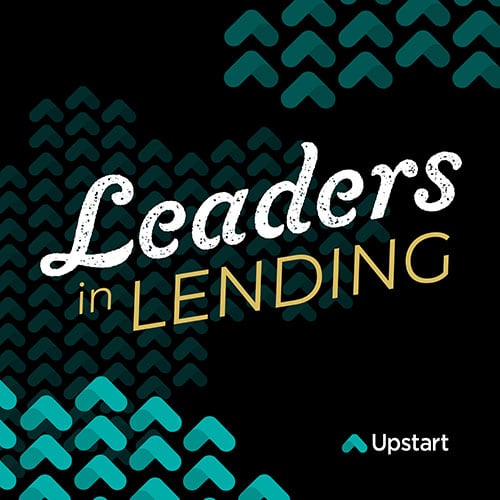Leaders in Lending | Ep. 111
CRO Perspective: Balancing Risk and Innovation in Banking
In this conversation, we’re joined by Kristina Schaefer, General Counsel, Chief Risk Officer & Chief Administrative Officer at First Bank & Trust. We dive into the evolution of banking (and government involvement) over time and what it means for today.


GUEST SPEAKER
Kristina Schaefer

ABOUT
First Bank & Trust
First Bank & Trust is one of South Dakota's largest family- and employee-owned banks, with 22 locations in 17 towns in South Dakota and Minnesota. For more than a century, financial institutions led by generations of the Fishback family have proven that banking professionals can be conservative risk managers and entrepreneurs at the same time. The same entrepreneurial spirit that led Horace Fishback Sr. to open his first check-cashing station in Brookings, SD in 1880 drives them toward their vision: To grow a diversified independent financial corporation that excels in delivering community banking services and providing niche products nationwide. First Bank & Trust is proud to be a family- and employee-owned community bank. Their 700+ employees take pride in their Be the 1 Service Culture principles. They offer all of the strength and capabilities you might expect from a big-bank, but still have the flexibility and responsiveness of an independent local bank.
Key Topics Covered
- The past, present and future of the banking and federal government relationship
- Current state of risks, and what it means for federal involvement
- Importance of people, culture and community in banking operations

“I think concentration risk is just going to continue to be critically important; you know, what percentage of your deposits and loans should be in which particular industries?”


EPISODE RECAP & SUMMARY
Following recent bank failures, there has been a shift in the nature of risks in the banking world — the federal government playing a significant role in stabilizing. These experiences have highlighted the dynamic nature of risks in finance and banking and the need for a responsive government, ready to take action.
In this conversation, we’re joined by Kristina Schaefer, General Counsel, Chief Risk Officer & Chief Administrative Officer at First Bank & Trust. We dive into the evolution of banking (and government involvement) over time and what it means for today. According to Schaefer — banks must adapt from traditional methods to meet the quickly evolving needs of today's financial markets.
Join us as we discuss:
- The past, present and future of the banking and federal government relationship
- Current state of risks, and what it means for federal involvement
- Importance of people, culture and community in banking operations
The past, present and future of the banking and federal government relationship
The last bank run — until recent times — was in 2000. To say a lot has changed in the industry since then would be an understatement.
“What this recent failure — particularly with Silicon Valley Bank — demonstrated was the power of quick communication that exists now that didn't historically,” Schaefer said. “We saw the news start to spread fast and the role that good PR, and maybe bad PR, can play in fueling something like that.”
Banks have enjoyed a flush state of deposits over the last several years. As the economy revs back up and people pull funds to run their businesses, that reality changes. Schaefer implored banks to track the data of their loans and deposits to combat concentration risks.
“What percentage of your deposits and loans should be in which particular industries?” she said. “They had 25 percent of their depositors in this, they had 50 percent of their depositors in that — that's good metrics to know, and to know where your bank is at.”
Those percentages are catching industry-wide attention in the name of risk prevention. Alongside those metrics, eyes are on the federal government after their actions relating to the bank run and failures.
Though the panic and fear from customers of the affected banks were valid, Shaefer views the federal government's involvement as helpful in some respects, acting as a calming force for those announcing their believed losses publicly.
Alongside these extreme examples of federal involvement, rate shopping rises in commonality as information becomes more and more accessible. The increase in online banking and cryptocurrency continues to act as an accelerant for innovation.
Current state of risks, and what it means for federal involvement
Every few years, the Uniform Law Commission comes out with suggested revisions to the Uniform Commercial Code (UCC), and the 2022 amendments recently hit the scene, sparking conversation around risk and the future of digital currency.
“One of the main things that this bill did is — people had a hard time lending against Bitcoin, about taking Bitcoin as security for particular loans, because of the nature of Bitcoin,” Shaefer said. “Right now, Bitcoin is a general intangible from a UCC perspective, and the way you perfect your security interest on a general intangible is you file a financing statement.”
This requirement was problematic for Bitcoin holders, and this bill addressed that concern by redefining digital currency as CER to improve the negotiability of Bitcoin and cryptocurrency.
Some consumers believe this bill is a gateway for increased federal control and surveillance over private affairs and digital funds, creating a central bank digital currency. This belief is not the case.
While the amendments do contemplate central bank digital currency, America does not have one. Other countries do. Further, a state can’t start its own central bank digital currency.
“Money — for purposes of the UCC — has a specific definition,” Shaefer said. “I think people maybe don't understand what the UCC is, and what it isn't. The definitions used in the UCC are about how banks make loans, how commerce transfers — it doesn't change the definition of money across the nation for Bank Secrecy Act purposes or anything else. It's just about commercial transactions.”
Importance of people, culture and community in banking operations
Talk of risk and change means managing people through that risk and change. Schaefer has a hand in risk and HR, making for a unique blend of operations and mitigation.
“We do — at our bank — often say that people are our most valuable asset. And as a result, your asset is subject to risk — you have to take care of your asset,” she shared.
Today, banks must compete for the best talent not only with the bank down the street but across the country. That means focusing on attracting talent and retaining talent simultaneously.
Not all benefits are created equal. Shaefer has had a front-row seat to shifting employee expectations and suggests adapting benefits to best appeal to relevant employee values.
“Some set of benefits will only appeal to some people. Maternity leave, for example, if you have no plans to have children, is that an attractive benefit? And if not, what's comparable? What's important in your life?” she said. “What is your employer doing to support your interest, whether it's pet insurance or financial support for you to get an advanced degree or maybe leave to take care of an aging parent.”
Beyond personal benefits, workers today have a deep care for community impact — even something as mundane as recycling or as life-giving as charitable donations and initiatives can support a more engaged culture.
Any advancements in the banking industry take dedicated employees. Without the people, innovation falls flat. Taking care of personnel is the ultimate investment into the future. Every bank should take steps to ensure their teams feel seen, heard and valued.
Stay tuned for new episodes every week on the Leaders in Lending Podcast.




